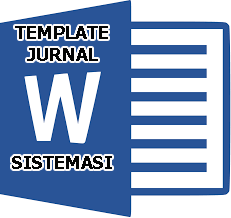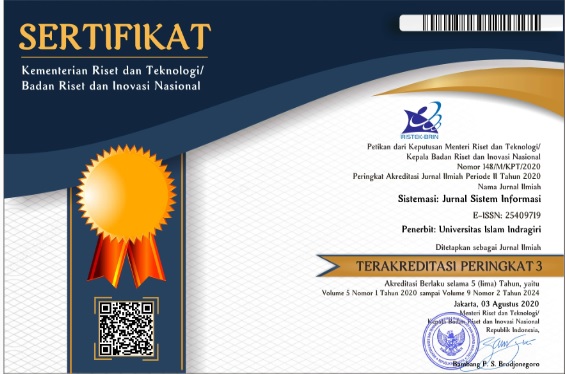The Role of Large Language Models in Enhancing Cybersecurity Measures: Empirical Evidence from Regional Banking Institutions
Abstract
Keywords
Full Text:
PDFReferences
M. Omar and H. M. Zangana, Redefining Security With Cyber AI. IGI Global, 2024.
H. M. Zangana and M. Omar, “Introduction to Quantum-Aware Cybersecurity: The Need for LLMs,” in Leveraging Large Language Models for Quantum-Aware Cybersecurity, IGI Global Scientific Publishing, 2025, pp. 1–28.
A. O. Hassan, S. K. Ewuga, A. A. Abdul, T. O. Abrahams, M. Oladeinde, and S. O. Dawodu, “Cybersecurity in banking: a global perspective with a focus on Nigerian practices,” Computer Science & IT Study Journal, Vol. 5, No. 1, pp. 41–59, 2024.
S. Wang, M. Asif, M. F. Shahzad, and M. Ashfaq, “Data Privacy and Cybersecurity Challenges in the Digital Transformation of the Banking Sector,” Comput Secur, Vol. 147, p. 104051, 2024.
H. M. Zangana, Z. B. Sallow, and M. Omar, “The Human Factor in Cybersecurity: Addressing the Risks of Insider Threats,” Jurnal Ilmiah Computer Science, Vol. 3, No. 2, pp. 76–85, 2025.
H. M. Zangana, M. Omar, and D. Mohammed, “Introduction to Artificial Intelligence in Cybersecurity and Forensic Science,” in Integrating Artificial Intelligence in Cybersecurity and Forensic Practices, IGI Global Scientific Publishing, 2025, pp. 1–24.
H. M. Zangana and M. Omar, “Introduction to Digital Forensics and Artificial Intelligence,” in Digital Forensics in the Age of AI, IGI Global Scientific Publishing, 2025, pp. 1–30.
O. Efijemue et al., “Cybersecurity Strategies for Safeguarding Customers Data and Preventing financial fraud in the United States financial sectors,” International Journal of Soft Computing, Vol. 14, No. 3, pp. 10–5121, 2023.
M. Ruziboyeva, “Importance Of Cybersecurity In Digital Banking Era,” Нововведения Cовременного Научного Развития в Эпоху Глобализации: Проблемы и Решения, Vol. 2, No. 1, pp. 6–11, 2024.
O. P. Olaiya, T. O. Adesoga, A. Ojo, O. D. Olagunju, O. O. Ajayi, and Y. O. Adebayo, “Cybersecurity Strategies in Fintech: Safeguarding Financial Data and Assets,” GSC Advanced Study and Reviews, Vol. 20, No. 1, pp. 50–56, 2024.
V. Komandla, “Safeguarding Digital Finance: Advanced Cybersecurity Strategies for Protecting Customer Data in Fintech,” 2023.
M. A. Kafi and N. Akter, “Securing Financial Information in the Digital Realm: Case Studies in Cybersecurity for Accounting Data protection,” American Journal of Trade and Policy, Vol. 10, No. 1, pp. 15–26, 2023.
S. S. Jha and A. Rao, “Safeguarding the Banking Sector using Cybersecurity Measures in the Digital Era.,” Grenze International Journal of Engineering & Technology (GIJET), Vol. 10, 2024.
S. O. Dawodu, A. Omotosho, O. J. Akindote, A. O. Adegbite, and S. K. Ewuga, “Cybersecurity Risk Assessment in Banking: Methodologies and Best Practices,” Computer Science & IT Study Journal, Vol. 4, No. 3, pp. 220–243, 2023.
A. I. Al-Alawi and M. S. A. Al-Bassam, “The Significance of Cybersecurity System in Helping Managing Risk in Banking and Financial Sector,” Journal of Xidian University, Vol. 14, No. 7, pp. 1523–1536, 2020.
N. AllahRakha, “Cybersecurity Regulations for Protection and Safeguarding Digital Assets (Data) in Today’s Worlds,” Lex Scientia Law Review, Vol. 8, No. 1, pp. 405–432, 2024.
O. A. Farayola, “Revolutionizing Banking Security: Integrating Artificial Intelligence, Blockchain, and Business Intelligence for Enhanced Cybersecurity,” Finance & Accounting Study Journal, Vol. 6, No. 4, pp. 501–514, 2024.
T. B. Amer and M. I. A. Al-Omar, “The Impact of Cyber Security on Preventing and Mitigating Electronic Crimes in the Jordanian Banking Sector,” International Journal of Advanced Computer Science and Applications, Vol. 14, No. 8, 2023.
H. M. Zangana and M. Omar, “Introduction to Digital Forensics and Artificial Intelligence,” in Digital Forensics in the Age of AI, IGI Global Scientific Publishing, 2025, pp. 1–30.
H. M. Zangana, N. Y. Ali, and S. R. M. Zeebaree, “Transforming Public Management: Leveraging Distributed Systems for Efficiency and Transparency,” Indonesian Journal of Education and Social Sciences, Vol. 4, No. 1, pp. 36–46, 2025.
M. M. Husin and S. Aziz, “Navigating Fintech Disruptions: Safeguarding Data Security in the Digital Era,” in Safeguarding Financial Data in the Digital Age, IGI Global, 2024, pp. 103–120.
DOI: https://doi.org/10.32520/stmsi.v14i4.5144
Article Metrics
Abstract view : 1721 timesPDF - 558 times
Refbacks
- There are currently no refbacks.

This work is licensed under a Creative Commons Attribution-ShareAlike 4.0 International License.









